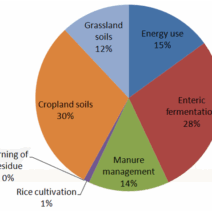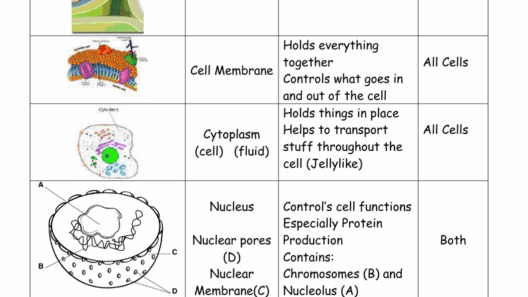The marvels of the natural world often conceal profound secrets, especially when it comes to survival strategies that involve conserving energy. Throughout the vast tapestry of life, various organisms exhibit a remarkable array of adaptations that allow them to thrive within their environments while minimizing their energy expenditure. This intricate dance of survival often results in resilient ecosystems where resource allocation plays a pivotal role. By exploring these fascinating examples, we can gain insight into nature’s penchant for efficiency and sustainability.
One prominent illustration of energy conservation is found in the domain of poikilotherms, creatures whose body temperatures fluctuate with their surroundings. Reptiles provide an exceptional case study in this regard. Unlike endothermic animals—such as mammals—who maintain a constant internal temperature, reptiles like the Eastern Box Turtle bask in the sun to warm up and retreat into shaded spots to cool down. This behavioral thermoregulation drastically reduces their metabolic rate during cooler periods, thereby conserving energy for growth, reproduction, and survival. The efficiency of such adaptations underscores a fundamental truth: survival often hinges upon energy management.
In the realm of flora, plants exhibit an extraordinary spectrum of energy-saving mechanisms. One of the most intriguing examples comes from the realm of succulents, which have evolved to thrive in arid environments where water scarcity imposes significant stress. Through the use of CAM (Crassulacean Acid Metabolism) photosynthesis, succulents such as cacti and aloe vera open their stomata at night instead of during the day. By seizing moisture-laden nighttime air, these plants mitigate transpiration losses and maximize photosynthetic efficacy during the sun-drenched part of the day. This ingenious adaptation not only conserves water but also optimizes carbon fixation, thus exemplifying nature’s resourcefulness.
Moreover, the phenomenon of torpor, a temporary state of reduced physiological activity, is another splendid manifestation of energy conservation. Hibernation, often associated with mammals like bears, is a more extreme and well-known form of this adaptation. However, many smaller species, such as hummingbirds, employ similar strategies. During periods of food scarcity or extreme weather, these tiny avians can lower their body temperatures and metabolic rates dramatically, entering a state of deep sleep. This process enables them to survive prolonged periods without sustenance, showcasing the profound interplay between physiology and environmental conditions.
Another remarkable example resides within the enigmatic world of marine life, where energy conservation is paramount. Certain fish species, like the lanternfish, possess the ability to produce bioluminescence. This phenomenon serves a dual purpose: attracting prey and evading predators. Leveraging the glow from specialized light-emitting organs, these fish can effectively manage energy expenditures while maintaining a delicate balance within the marine food web. The ability to produce light not only baffles researchers but also signifies an evolutionary strategy that optimizes energy use in the vast, dark ocean depths.
Transitioning from the ocean to the vast expanse of the tundra, one can observe another astonishingly efficient life form: the Arctic hare. This remarkable species has adapted to its frigid habitat by developing a thick coat of fur and compact body shape, which minimizes surface area and retains warmth. During winter, these hares enter a state of dormancy, significantly slowing their metabolic rate and reducing the need for food. By judiciously managing their energy reserves, Arctic hares ensure their survival in an unforgiving landscape, epitomizing the delicate balance between energy use and environmental constraints.
Turning to another facet of nature’s wisdom, the phenomenon of symmetry in predator-prey dynamics offers illuminating insights into energy conservation strategies. Predators, such as wolves or lions, often use social structures and cooperative hunting to optimize caloric intake versus expenditure. In contrast, prey species deploy camouflage or rapid escape mechanisms to evade their predators. Consider the African Impala, which utilizes sharp agility and an advanced nervous system to detect threats and conserve energy through strategic movements—highlighting a critical balance in the ecologic theater of life.
The relationship between symbiosis and energy conservation also merits discussion. The mutualistic bond between certain plants and mycorrhizal fungi exemplifies this interconnectedness, illustrating how different organisms work together to optimize resource acquisition and energy use. Mycorrhizal fungi expand the root systems of plants, enabling them to absorb nutrients from the soil more effectively. In return, the plants supply the fungi with carbohydrates synthesized through photosynthesis. This ecological partnership underscores how cooperation can lead to enhanced energy efficiency and shared survival.
As we delve deeper into the lessons offered by nature, it becomes clear that the principle of energy conservation transcends mere survival; it permeates the fabric of biological systems. The interconnected web of life illustrates that energy does not exist in isolation; it is intricately linked to the survival strategies of myriad organisms. Whether through behavioral adaptations like torpor and thermoregulation or through collaborative relationships like symbiosis, the myriad strategies employed by life on Earth demonstrate that conservation is not just an individual pursuit but a communal endeavor.
In conclusion, the astonishing examples of organisms effectively conserving energy compel us to reevaluate our preconceived notions about survival. The strategies witnessed in nature illuminate pathways towards sustainable living and resource management. By embracing these insights, society may find inspiration in the principles of efficiency, cooperation, and adaptability seen in natural ecosystems. Such revelations beckon a renewed commitment to conservation, urging us to learn from the extraordinary but often overlooked wisdom of the natural world.








